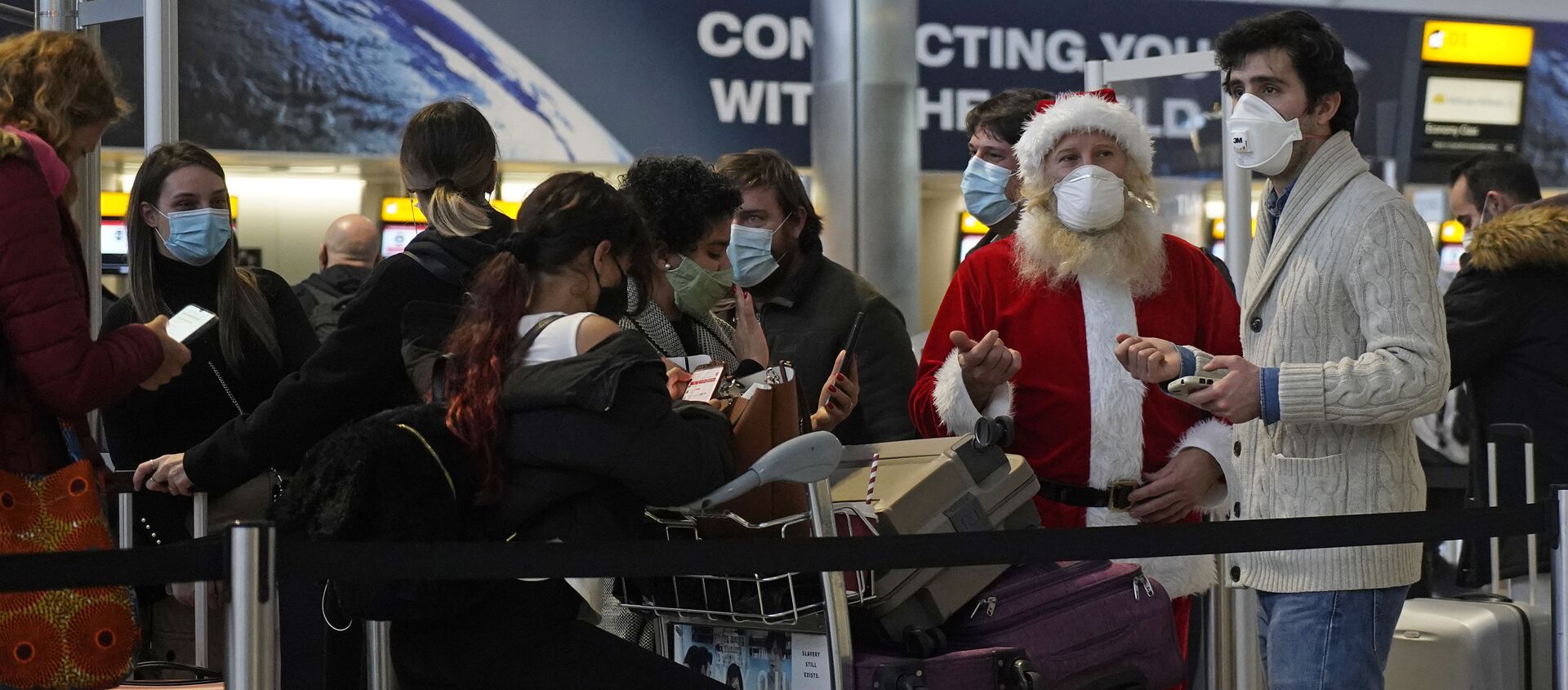Susan Roaf, Emeritus Professor of Architectural Engineering, at Heriot-Watt University, believes that a lack of proper ventilation in homes might have caused the spike in the number of coronavirus infections.
Sputnik: Why is good ventilation so important, particularly during the cold winter we're facing right now across the UK?
Susan Roaf: Well, I think there's a new emphasis with COVID on actual health but there's an awful lot also of importance you could place on the idea of wellbeing. The problem has been people have been persuaded that if you have a very limited comfort range, what you ought to do is live in a sealed building, and the windows are closed, and the machines can produce what you need in terms of ventilation, heat, cold, and so on. It's been really a very sad descent from buildings that could use natural energy for as much of the day, or the year, as possible, to be ventilated or heated or cooled.
So, what we have now is a generation of buildings in which you can't open windows, and it's become critical with COVID because of course most air-conditioning systems just recirculate around buildings, and therefore there's been quite a lot of cross infection. I mean, it's been demonstrated in hospitals, restaurants, and so on. Post COVID, the emphasis has been 'For goodness' sakes, open the windows', because rather than just recirculating that virus-laden air through buildings, if you open the windows you can dump the viral load outdoors. For many buildings, it's too late, because you simply can't open the windows.
Sputnik: What changes do we need to know and maybe make to stay comfortable in our own home?
Susan Roaf: The building has to do the work because the problem with all the regulations - which are, by the way, written by the air-conditioning industry, ASHRAE [the American Society of Heating, Refrigerating and Air-Conditioning Engineers] in America writes the regulations - is that they force people to have ever more mechanical ventilation in their buildings. The trouble is, you spend more and more on mechanical equipment, you spend less and less on the building. So, buildings have been reduced to boxes with thin, tight-skinned, closed envelopes, and the mechanical systems are supposed to do the work but actually, if you want to remain safely comfortable in your own home you need a good building. What people find comfortable in buildings is the temperatures they normally occupy.
So, people can actually be fairly comfortable, they adapt to be comfortable in their homes - it might be 18 degrees centigrade in winter, or might be 26, 27, 28 in summer with a nice cool breeze. What people don't like is sudden swings in temperature. So, any building that has a range of five or six degrees over a day makes people uncomfortable - they can't easily take off more clothes or put them on. So, what makes people comfortable in buildings is not having that extreme swing of temperature; there's psychological factors, there's physical factors, but also, we really have to understand that this move to cheaper buildings with much more equipment in them, is probably coming to a close now.
Sputnik: What have we learnt from the COVID pandemic so that we can better adapt our homes in the future, not just to stay comfortable, but also so they draw upon some of those factors that you mentioned there, which go beyond comfort?
Susan Roaf: What we've learnt is if you're sensibly designing buildings you should design them to be able to open the windows to purge the room of viruses, etc. We have to understand we're going to a world that's hotter, so you get even more overheating, we'll have probably more and more pandemics, so you have to design for that. We've also got pollution in cities, so basically, we have to rethink the cities, so you have cities where the air is not so toxic that you can't open a window, and issues of society. Because in the Chicago heat waves of 1995, the reason they found so many old people dead in their flats was because they were frightened to open the window in case they got robbed. They couldn't afford the air conditioning, so basically you have to really look at making opening windows secure, and shading them, but also really look at the societal issues of equity, making sure that people are not in killer buildings or killer lifestyles either. So, it's about redesigning the city and it's redesigning - in a way - our societies.





